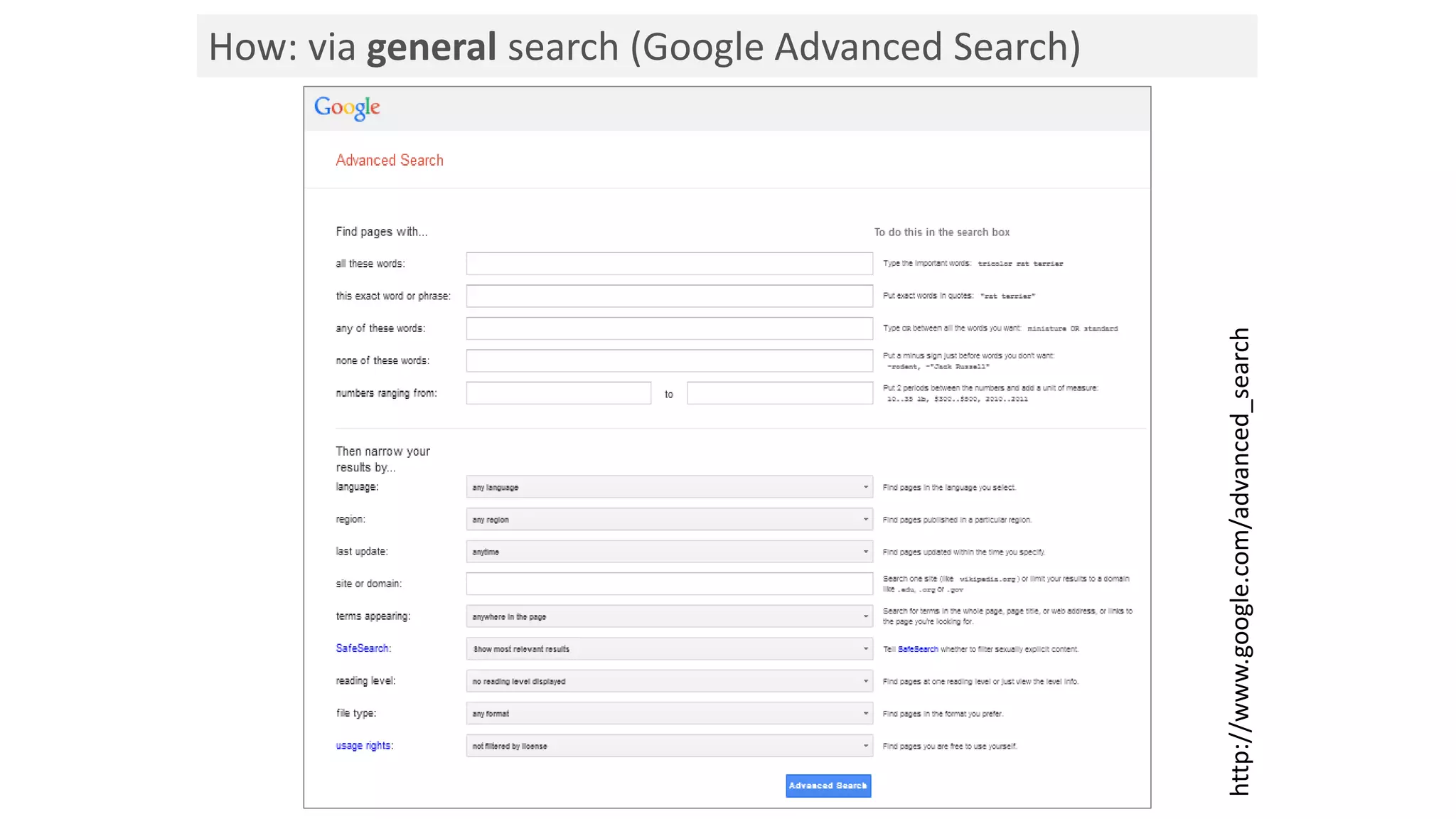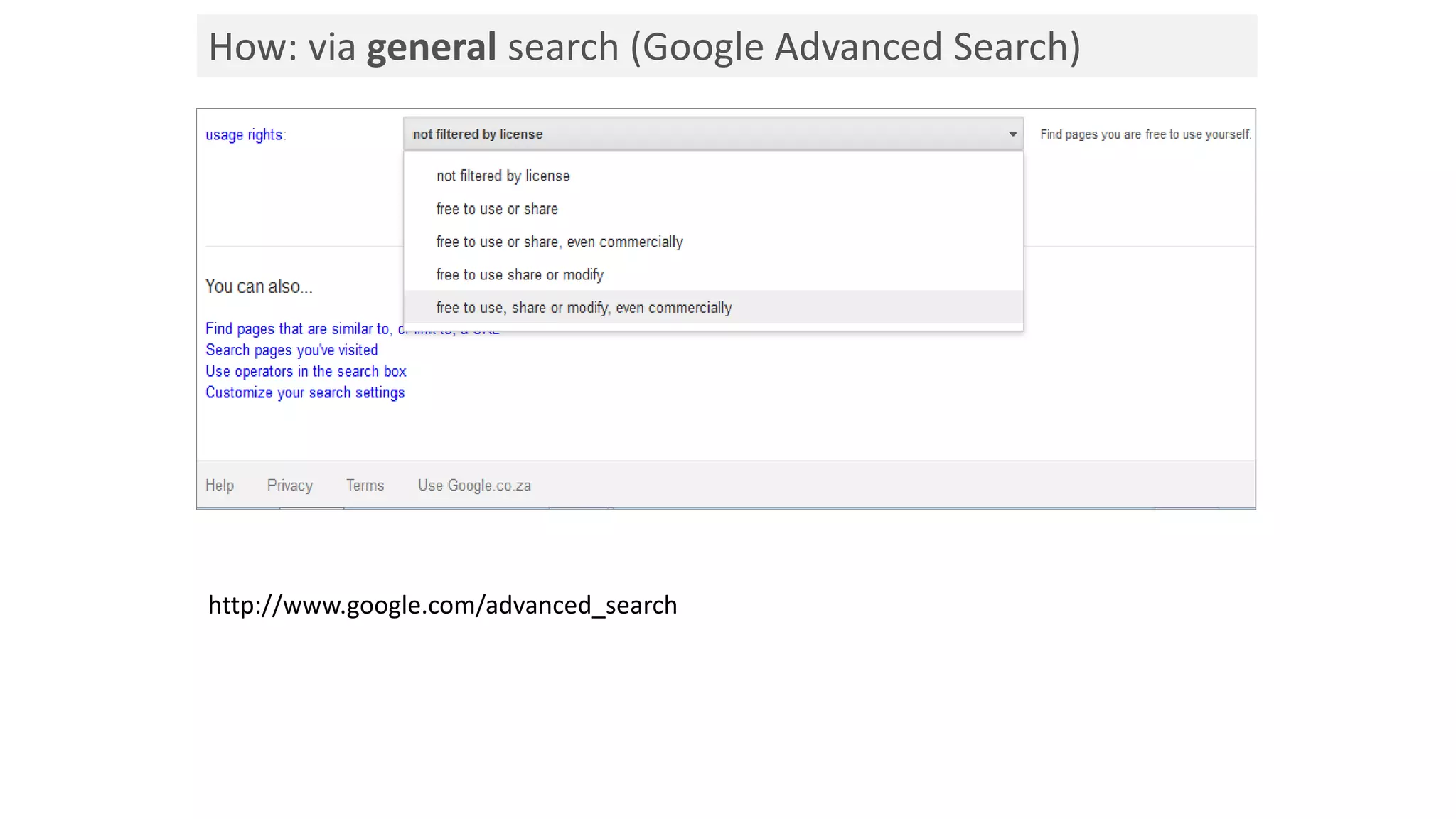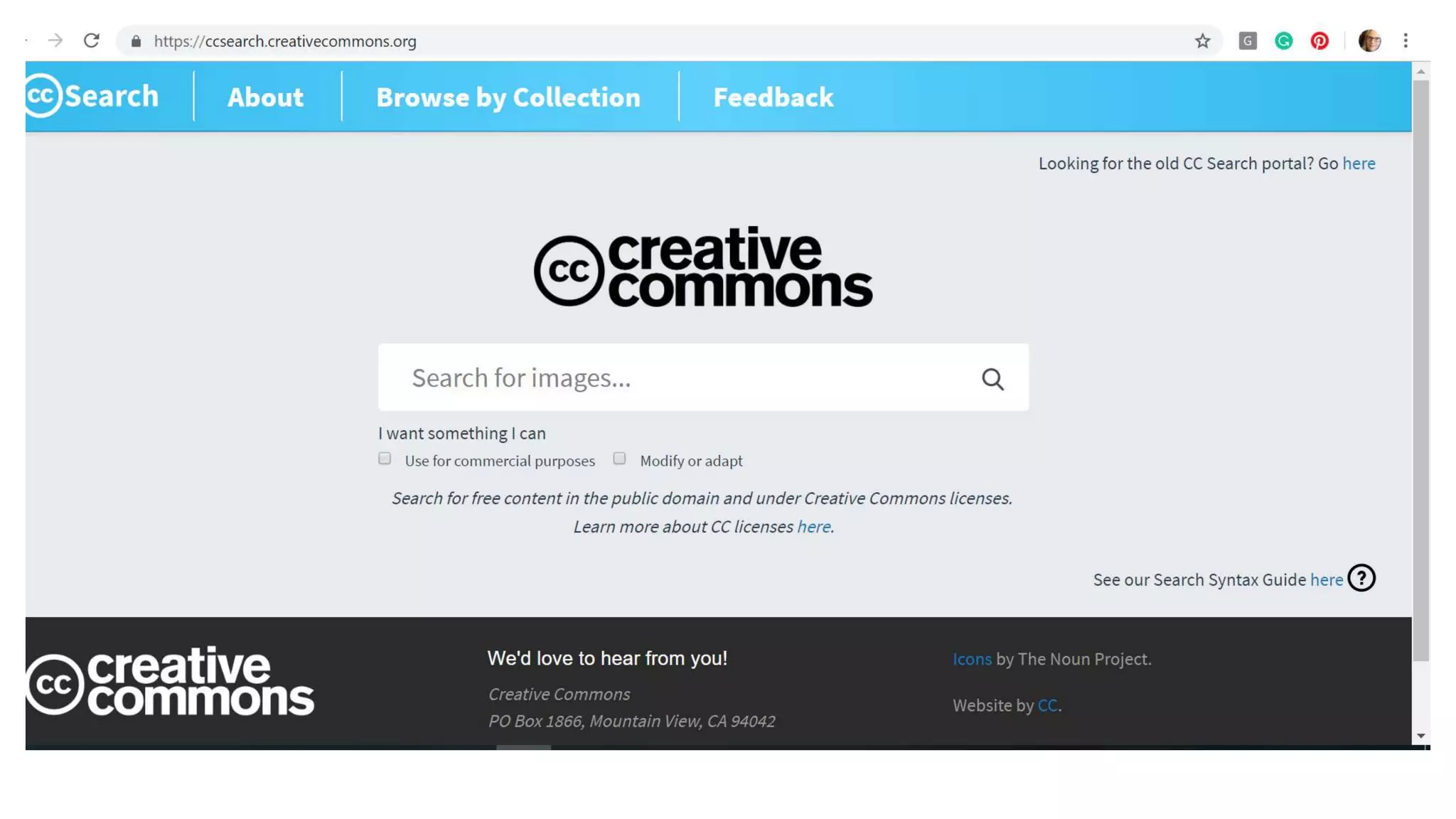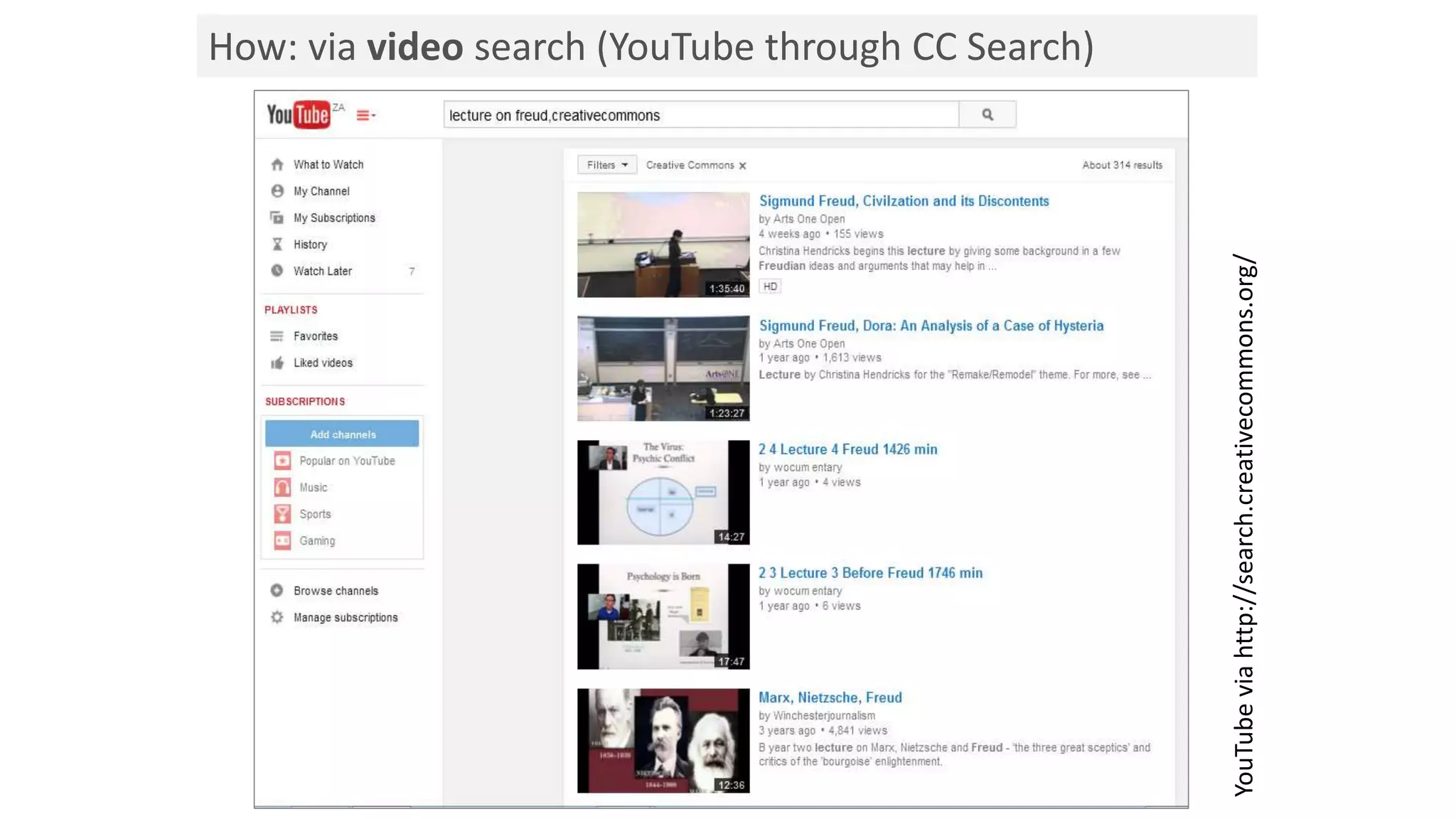The document outlines a workshop on open education, emphasizing the importance of open educational resources (OER) and practices (OEP) that promote accessible and collaborative learning. It discusses various licensing options, including Creative Commons, to facilitate the sharing and adaptation of educational materials while addressing copyright issues. Participants are encouraged to find and evaluate OER suitable for their teaching needs, focusing on localization and accuracy of the content.








































































